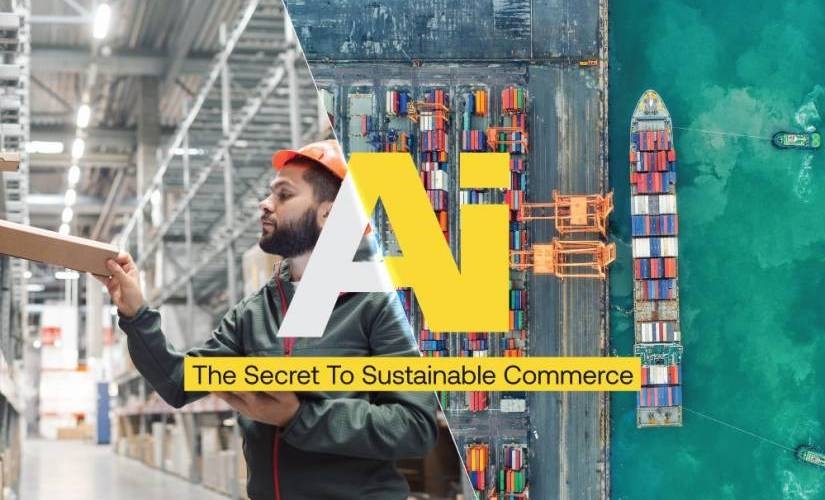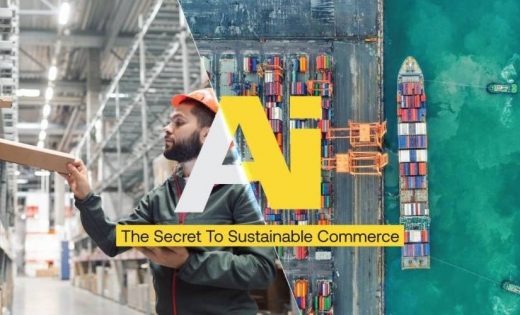Can AI Save the Supply Chain From its Own Destruction?
Can AI Save the Supply Chain From its Own Destruction?

In the age of click of a button convenience, many see the race to the bottom as competition that is both unsustainable and one where no one wins. Shipping things quickly come at both an environmental cost as well as a monetary cost. As more retailers try to beat each other on price and shipping — the cost of doing business continues to skyrocket.
Can artificial intelligence pinpoint inefficiencies in the supply chain structure and create a more sustainable and profitable system?
Customers have unlimited options and know how to use them — and many will expect a full refund and take their business elsewhere because of a late delivery.
What is AI, Anyway?
Artificial intelligence is a method of machine learning that can be used for everything from replacing humans in repetitive tasks to analyzing vast amounts of data to pinpoint relevant information. Many of us interact with artificial intelligence on a daily basis without even realizing it.
Customer service call systems that take our basic information and route our calls to the correct representative are an example of artificial intelligence taking over repetitive tasks to free humans for more complex or nuanced work.
More sophisticated systems of artificial intelligence are used to analyze big data sources to pinpoint relevant information.
Modern day humans create terabytes of data every single day, and until recently all that data would sit around doing nothing. If you don’t have the human power to comb through the data, it does you no good. Now thanks to machine learning, vast amounts of data can be fed into a system, and programmed algorithms can analyze and find information based on patterns within the data.
Vast amounts of data computed into an actionable type of analysis have shown promise in diagnostic models for certain diseases, helping doctors to determine which patients are at the most significant risk so they can be diagnosed and treated more effectively and efficiently. This type of data analysis can also be used to find inefficiencies in a company’s supply chain, often which can lead to greater efficiencies in the entire industry.
Empty Space in Trucks and Shipping Inefficiency Seemed Like an Unsolvable Problem
In the race to get orders to customers as quickly as possible, the problem of empty space in shipping vehicles began to grow. This led to additional fuel consumption, CO2 output, and also overall shipping cost. In 2018 alone, empty truck space was responsible for 16% of the mileage for one U.S. company.
UPS began to study ways to maximize shipping routes to limit time idling and save fuel, getting deliveries there faster by learning optimal shipping routes. ORION is a 1000 page algorithm that can learn shipping routes and use that knowledge to find inefficiencies and streamline the shipping and delivery process.
One of the earliest interventions was doing away with left-hand turns wherever possible. UPS drivers knew this trick already, but the algorithm was able to prove its effectiveness. Utilizing data from GPS, driver habits, and more, ORION was able to save 10 million gallons of fuel annually while eliminating 100,000 metric tons of CO2 emissions and saving up to $400 million in shipping costs by the end of 2016.
Future versions of the algorithm will be able to account for bad weather and other common problems that can grind shipping to a halt, costing companies millions.
Algorithms like this one can pinpoint multiple inefficiencies in shipping systems, ensuring deliveries make it not only on time but with reasonable associated costs. Saving on truck space and optimizing shipping routes is just the beginning.
Supply Side Logistics can also be Streamlined
One way to ensure you always have what your customers want in stock is just to carry as much stock as you can fit in a warehouse. While this may work for some larger companies, anyone trying to compete with them is likely to be left in the dust. Inventory is costly, and stock that just sits there unsold is too expensive for most businesses.
Excess inventory costs American businesses $433 billion a year. Artificial Intelligence can help here, too.
For manufacturers, AI can be used to target the manufacturing process to determine where greater efficiencies can be deployed. For example, using electricity outside of peak times can decrease emissions as well as drive down utility costs. Ensuring workers only go into overtime when completely necessary and shifting manufacturing needs around to different shifts can also save on labor costs. Finally, manufacturing just to meet needs ensures there’s not stock sitting around waiting to be shipped out.
On the other side, AI can be used to forecast customer orders so that the product is only ordered for an eCommerce business when it is likely to get sold right away. AI can monitor supply so that when certain products get down to lower levels, it can trigger a warning to order more, taking the human guesswork out of inventory control.
In one study, a company that had products in transit often for two weeks at a time was able to decrease inventory by finding greater efficiency in shipping. ToolGroup’s SO99+ Inventory Optimizer was fed data on production and sales history, and within a year excess inventory was reduced by 20%, double the 10% goal.
The Race to the Bottom can be Efficient and Effective
Customers want options when they place an order for a product online, and their expectations exceed what many businesses can efficiently deliver. Advances in artificial intelligence technologies and applications are able to close these gaps, delivering better products at better prices in a faster and more efficient way, ensuring customer happiness and repeat business.
Unfortunately, many companies ignore customer happiness when implementing cost-saving technologies, which is a tragic mistake in an age where customers have more options than ever before. Three quarters of retailers focus their efforts on reducing costs and increasing profit margins when implementing new technologies.
Artificial intelligence allows these retailers to analyze inefficiencies.
These pieces of data can be applied across the entire supply chain — something that 71% of retailers say is very important for their business. Global data analysis can:
- Reduce costs by analyzing and tracking problems throughout the system
- Recommend preventative maintenance schedules to reduce costly and inefficient equipment breakdowns
- Reduce repetitive tasks by assigning them to machines, freeing up humans for more intricate work and assigning difficult tasks to the most experienced team members
- Predict market demand based on previous consumer data
AI Managed Supply Chains Keep Customers Happy
Humans can’t do all the heavy lifting when it comes to managing supply chains. Feeding in data to AI algorithms can save a lot of time and money on making the whole eCommerce system more efficient and effective. Customers want the best product at the best price shipped to them quickly and often for free.
Eight out of ten customers are likely to look for another supplier if a shipment is even a little late, up 34% from 2017 to 2018. eCommerce businesses are tricky to run efficiently in the age where major suppliers seem to have everyone beat in terms of product availability and shipping speed, but artificial intelligence can level the playing field.
In 2017 U.S. companies spent $1.5 trillion on shipping and logistics, so any gains in efficiency are likely to result in significant payoffs for both retailers and consumers.
Learn more about the many ways in which artificial intelligence can increase efficiency throughout the supply chain from the infographic below. Maintaining the status quo in the age of machine intelligence is not likely to result in a viable business for much longer.
It’s time to embrace artificial intelligence for eCommerce and enjoy the streamlined and efficient supply chain; this technology can foster well into the future.
The post Can AI Save the Supply Chain From its Own Destruction? appeared first on ReadWrite.
(32)


